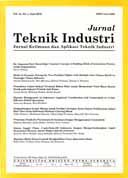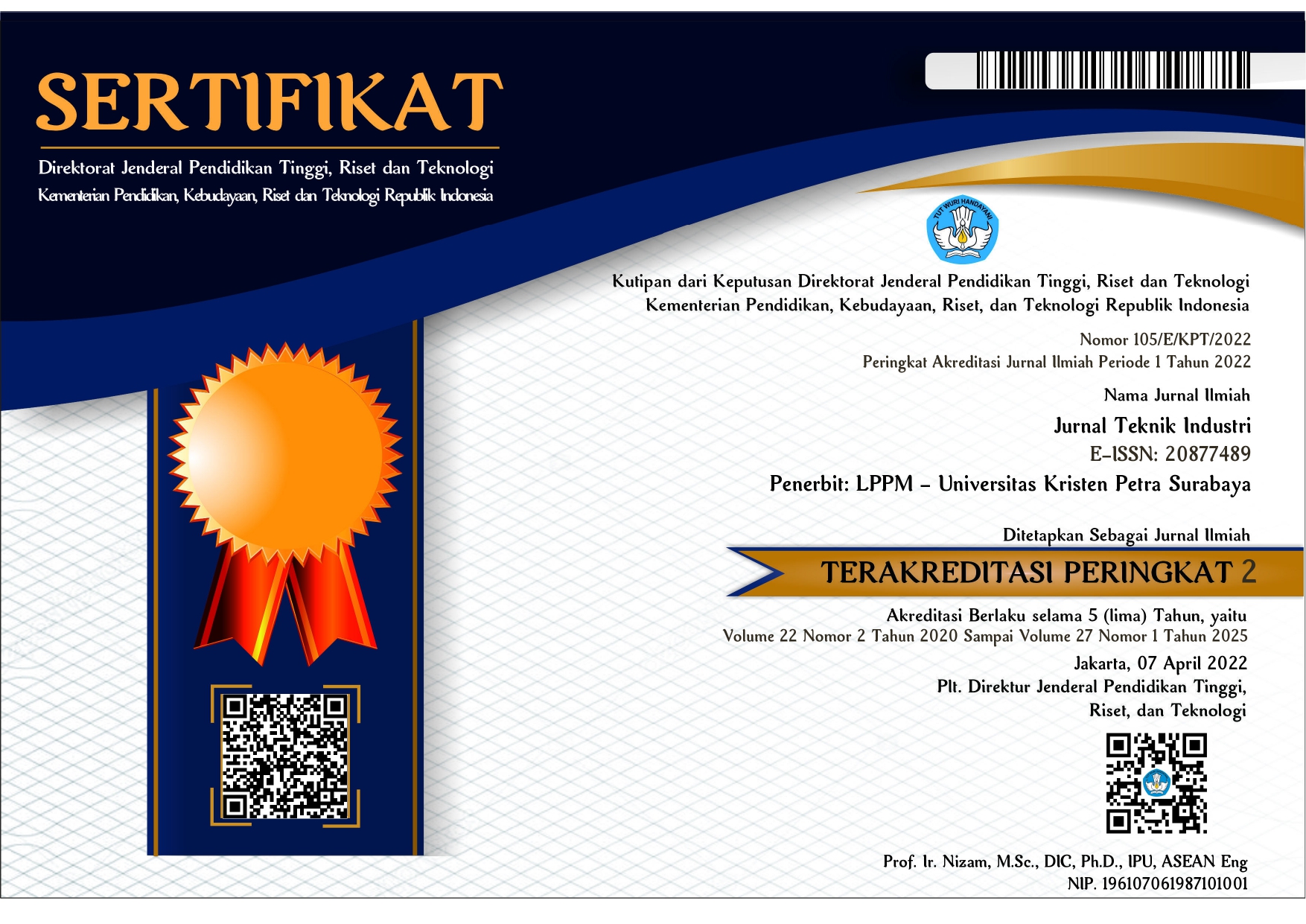Ergo-Biopsychosocial Approach to Support the Quality of Life of Small Housing Inhabitants
DOI:
https://doi.org/10.9744/jti.22.1.25-36Keywords:
biopsychosocial, ergonomics, sustainability, quality of life, small housingAbstract
A study on the intervention of human factors engineering (known as ergonomics) on sustainable living based on biopsychological needs was conducted, taking samples of small housing inhabitants. In total, 90 participants were involved. Those who were living in small housings have a significant challenge of how to live comfortably given very limited space. The measurement of the quality of human life through WHOQOL-BREF (World Health Organization Quality of Life-BREF) and ergonomics-based usability were used to describe the current human well-being satisfaction, to propose the modified physical facilities, and to validate the proposed design and improvement. The findings showed that all implemented improvements have supported the inhabitant’s quality of life.
Downloads
References
World Health Organization, WHOQOL-BREF: Introduction, Administration, Scoring, and Gene-ric Version of the Assessment, Geneva: WHO, 2004.
Diener, E., Diener, M., and Diener, C., Factors predicting the subjective well-being of nations. In: Diener, E. Culture and Well-Being: The Collected Works of Ed Diener, Social Indicators Research Series, London: Springer, 38, 2009, pp. 43–70.
Oliveira, R. C., and Elali, G. A., Minimum Housing Spaces, Flexibility, and Sustainability: A Reflection on the Basis of Ergonomics Inter¬ven-tion, Work, 41, 2012, pp. 1409 – 1416.
IEA, International Ergonomics Association, retrieved from https://www.iea.cc/ on 10 January 2020.
Engel, G. L., The Need for a New Medical Model: A Challenge for Biomedicine, Holistic Medicine, 4(1), 2009, pp. 37 – 53.
Barcaccia, B., Quality of Life: Everyone Wants It, But What is It ? Forbes/Education, 2013.
Frankenhaeuser, M., A Biopsychosocial Approach to Work Life Issues, International Journal of Health Services, 19(4), 1989, pp. 747 – 758.
Tan, K. C., Hartono, M., and Kumar, N., Anthro-pometry of the Singaporean and Indonesian Populations, International Journal of Industrial Ergonomics, 40(6), 2010, pp. 757 – 766.
Hartono, M., Indonesian Anthropometry Update for Special Populations Incorporating Drillis and Contini Revisited, International Journal of Industrial Ergonomics, 64, 2018, pp. 89 – 101.
Guimaraes, B. M., Ergonomics and workplace adaptation to people with disabilities, Work, 50, 2015, pp. 607 – 609.
Millera, L., Dorseyb, J., and Jacobs, K., The Importance of Ergonomics to Sustainability through¬out a Building’s Life Cycle, Work, 41, 2012, pp. 2129 – 2132.
Kelbiso, L., Belay, A., and Woldie, M., Determinants of Quality of Work Life among Nurses Working in Hawassa Town Public Health Facilities, South Ethiopia: A Cross-Sectional Study, Nursing Research and Practice, 2017.
Azwar, S., Penyusunan Skala Psikologi, Edisi 2, Yogyakarta: Pustaka Pelajar, 2012.
Nielsen, J. Usability Engineering, Mountainview, California: SunSoft, 1993.
Anzanello, M. J., and Fogliatto, F. S., Learning Curve Models and Applications: Literature Review and Research Directions, International Journal of Industrial Ergonomics, 41, 2011, pp. 573 – 583.
Downloads
Published
How to Cite
Issue
Section
License
Articles published in the Jurnal Teknik Industri: Jurnal Keilmuan dan Aplikasi Teknik Industri will be Open-Access articles distributed under the terms and conditions of the Creative Commons Attribution License (CC BY).
![]()
This work is licensed under a Creative Commons Attribution License (CC BY).



















